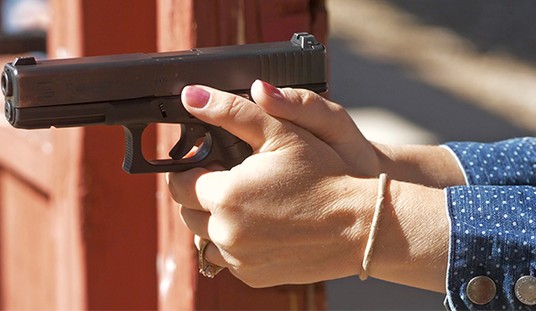I’m not talking about the Murphy’s Law that states “anything that can go wrong will go wrong,” but rather, the law championed Sen. Chris Murphy known as the Bipartisan Safer Community Act, which the Connecticut Democrat contends is responsible for what looks to be a record-setting decline in the nation’s homicide rate.
Murphy took to X/Twitter this week to give Democrats credit for the decline in homicides, calling it no coincidence that the drop took place the year after BSCA took effect.
In 2022, Congress passed the first significant gun safety legislation in 30 years.
In 2023, murders (about 3/4 of which are gun deaths) went down 13% – THE BIGGEST RECORDED DROP IN U.S. HISTORY.
Not a coincidence. pic.twitter.com/d3TnlcWGRu
— Chris Murphy 🟧 (@ChrisMurphyCT) January 1, 2024
If it was no coincidence that murders dropped by 13 percent after the passage of the BSCA, then it must not have been a coincidence when murders increased after the Gun Control Act was signed into law in 1968, right?
Here’s another question for Chris Murphy: why did homicides go up in two of the three biggest cities in Connecticut if the BSCA was so instrumental in reducing homicides across the country? While Hartford saw an 8 percent decline in murders (at least through December 9th), Bridgeport had a 15 percent increase (through September 30th) and New Haven was home to a 65 percent increase (through December 17th). Combined, the three cities had 65 murders in 2022 but at least 73 last year, so it doesn’t appear that Connecticut’s overall homicide rate declined at all.
While Murphy and his fellow Democrats would love to take credit for what does appear to be a substantial reduction in the U.S. homicide rate, the truth is far more complicated than his simplistic suggestion that BSCA is responsible for the decline. First off, homicides were already declining in 2022, according to the FBI, which recorded a murder rate of 6.8 per 100,000 people in 2021 but a 6 percent decline to a rate of 6.1 per 100K in 2022. The decline accelerated last year, but it had already begun before the Bipartisan Safer Communities Act was signed into law in June of 2022.
The gun control provisions in the Bipartisan Safer Communities Act largely consisted of increased background checks for young adults purchasing firearms, added a new federal crime of firearms trafficking, and expanded the restrictions on gun purchases for those convicted of misdemeanor domestic violence offenses. If BSCA were truly responsible for the drop in homicides, we’d expect that the drop would be fairly uniform across all fifty states, but that isn’t the case at all. In fact, there are wild variations within individual states, and Connecticut is a perfect example of that.
Crime is largely a local phenomenon, though there were likely some things going on nationally in 2020 that helped the homicide rate to spike by a record 29 percent; the COVID-related closures of courts and the emptying of jails, widespread riots and civil unrest, and the Democrats’ embrace of the “defund the police” movement among them. Three years later those issues that plagued jurisdictions around the country have largely subsided. Courts and jails have mostly returned to normal business, while many of the same politicians who were ready to “reimagine policing” are now looking for ways to increase the number of uniformed officers on the street and backing away from their criminal justice reforms.
2023 was closer to an average year than the outlier that was 2020, but we still see large differences in homicide rates between various U.S. cities. Dallas, Texas, for instance, had an increase of 15 percent, while Houston saw a 20 percent decline. Murders were up by 6 percent in Columbus, Ohio, but down nearly 20 percent in Cincinnati and almost 30 percent in Toledo. Was the Bipartisan Safer Communities Act responsible for each of these figures, or only those cities that suits Murphy’s narrative?
There is good news to be found in these crime states, but it’s not the story that Murphy is pushing. Rather than a new federal law having a record-setting impact, what we’re really seeing is a return to the historical trends that have existed for the past 30 years; more guns and less crime.
It's funny how yesterday the sky was falling and we were all about to die by an AR15 killing us all. Then Biden's poll numbers on crime tanked. Today, you want to claim a 30 year downward trend in violent crime as being the result of the do nothing "safer communities act". 🤣🤣 pic.twitter.com/jjPVzURipy
— Military Arms (@MAC_Arms) January 1, 2024
Violent crime is down almost 50 percent since the early 1990s, and over the past 30 years we’ve seen the vast majority of states adopt “shall issue” concealed carry, more than half the country enact permitless carry, and tens of millions of firearms sold each and every year. That‘s the real story, but it’s no surprise that Murphy wants to pretend that his pet gun law has magically made the country a safer place. To acknowledge reality would be to admit that his anti-gun ideology is a failure, and Murphy’s not about to do that anytime soon.









